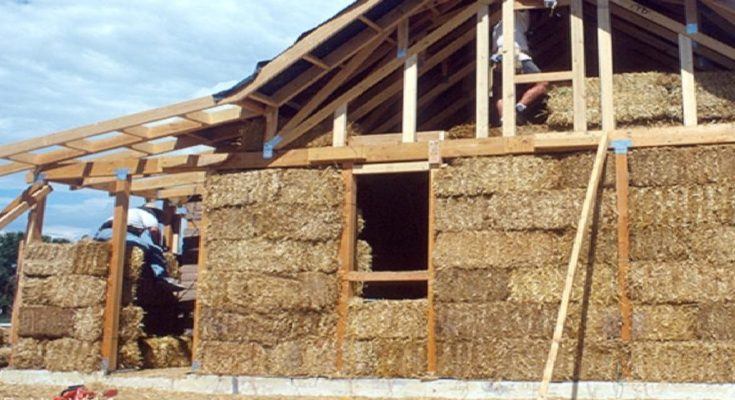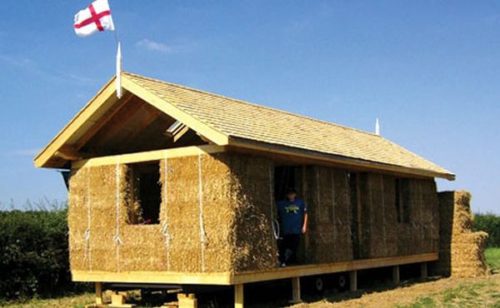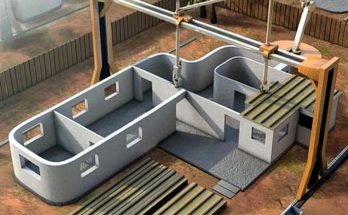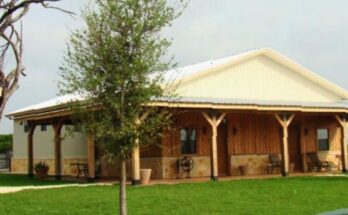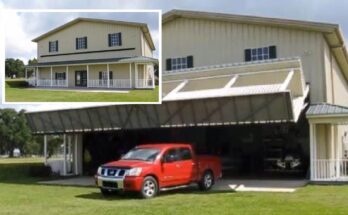Prefab and tiny home builders — even full-sized family home buyers — how many of you have considered straw bale constructed homes? Maybe a lot of people haven’t even heard of this, but it’s done and it’s a way to save money on a home. For one thing, straw bales are available almost everywhere there are fields, and therefore building material transport can be greatly reduced. It’s therefore also an environmentally friendly building material. Not to mention any unused pieces just return to the environment quickly and without damage.
The building style is relatively new, but not brand new. The first houses built using straw bales that we know of are from the 1920’s, both in Europe and in America (Nebraska).
So how do you build one of these? It’s a lot like a cross between a timber frame and an adobe house. The house starts out as a timber frame building project. The floor, walls, and ceiling and roof are framed with 2X4 or whatever you’re going to use.
Framing is done in the normal way, but that’s when things are done differently from regular timber framing, because now the straw bales come into the picture. They’re stacked like lego blocks or like ice blocks in an igloo, overlapping like bricks, on the corners as well.
Electrical is put inside the walls, so stuffed into the straw bales a bit. You want it in a bit in case the wall gets punctured at some point by someone wanting to hang something on a nail or something, although this is not usually very common.
Stucco is a structural as well as design element in straw bale houses. Portland cement, sand, lime and water is a common mix, and it’s applied with a trowel. You just pile some on a trowel and push it into a wall. There isn’t a great deal of finesse involved or required in stucco-ing straw bale house walls.
They do a second coat of stucco — called a “brown coat” over top to smooth things out. They try to fill in indentations and just give smooth walls. Then a finish coat is applied. Sometimes the finish coat is colored or textured. During the stucco phase, the walls are sprayed down periodically to prevent cracking.
Niches and shelves are carved into the walls (yes, little shelves are just cut into it). Some people add murals and other design elements as well. And there are “truth windows” cut into it. Basically these are just flaps that you can lift and see the straw inside the walls.
Framing for the interior is done with 2X4 timber framing, usually. So, after you’ve done the walls — that’s where the straw bales part of the job is — you return to what timber frame construction hands are familiar with. One company doing this kind of work is called Building with Awareness. Find them in the Building Homes and Living directory.
